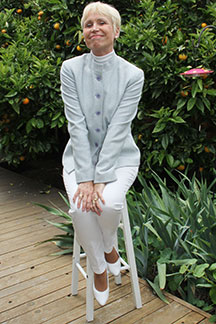In response to the Berlin Blockade http://walled-in-berlin.com/j-elke-ertle/berlin-blockade-and-the-cold-war/the Western Allies (United States, Great Britain and France) organized the Berlin Airlift. The miles flown to supply Berlin from the air between 24 June 1948 and 12 May 1949 equaled almost the distance between the earth and the sun.

Berlin Airlift Memorial at Berlin’s Tempelhof Airport. The inscription at its base reads “They gave their lives for the freedom of Berlin in service of the Berlin Airlift 1948/49”, photo © J. Elke Ertle, 2015
The Berlin Blockade meant eminent starvation
When the Soviets severed all land and water connections between West Germany and West Berlin in June 1948, there were only 35 days worth of food and 45 days worth of coal left in the city. The power generated provided only 2.5 hours worth of electricity during a 24-hour period. Starvation loomed. Convinced that the United States, Great Britain and France had little choice but to surrender West Berlin, the Soviet military administration celebrated. But their bash was premature.
To try or not to try the Berlin Airlift?
The Soviet Blockade had convinced the three Western Allies that remaining in Berlin was essential to stemming the spread of Communism. Since all surface routes to West Berlin were blockaded, the only alternative was to supply West Berlin by air. There were three previously negotiated air corridors. But the task was enormous. Never before had a population this large (2 million) been supplied from the air. Estimates indicated that about 4,000 to 5,000 tons per day would have to be airlifted to supply the city. And those were summer figures when there was no need for heat. During the winter months the total tonnage required to be airlifted would be closer to 6,000 tons per day. Nonetheless, the American and British military agreed to try a joint operation. The U.S. part of the operation was named Operation Vittles; the British one was dubbed Operation Plainfare. In September 1948, the Australian military joined with Operation Pelican.
The Berlin Airlift begins
On 25 June 1948, only one day after the start of the Berlin Blockade, the American military commander, General Lucius D. Clay, gave the order to launch Operation Vittles. http://walled-in-berlin.com/j-elke-ertle/lucius-d-clay-berlins-defender-of-freedom/ The next day, 32 planes hauled 80 tons of milk, flour and medicine to West Berlin. The first British aircraft flew on 28 June. During the first week, the airlift averaged only ninety tons a day, but by the second week it reached 1000 tons. Then Major General William H. Tunner was put in charge of the operation. He quickly doubled the tonnage and hours flown. Supply planes eventually flew in five altitudes, starting at 500 feet. Every three minutes a plane landed in West Berlin. He replaced the unloading crews unloading almost entirely with local people.
The Berlin Airlift ends
Although the Berlin Blockade ended on 12 May 1949, the Berlin Airlift continued until 30 September. The Western Allies stocked up on food, fuel, and other supplies, just in case the Soviets might resume the blockade. Between June 1948 and September 1949, the Berlin Airlift delivered more than 2.3 million tons of cargo on over 275,000 flights. Nearly two-thirds of the cargo was coal. Pilots came from the United States, United Kingdom, Australia, Canada, New Zealand, and South Africa.
For a sneak peek at the first 20+ pages of my memoir, Walled-In: A West Berlin Girl’s Journey to Freedom, click “Download a free excerpt” on my home page and feel free to follow my blog about anything German: historic and current events, people, places and food.
Walled-In is my story of growing up in Berlin during the Cold War. Juxtaposing the events that engulfed Berlin during the Berlin Blockade, the Berlin Airlift, the Berlin Wall and Kennedy’s Berlin visit with the struggle against my equally insurmountable parental walls, Walled-In is about freedom vs. conformity, conflict vs. harmony, domination vs. submission, loyalty vs. betrayal.













